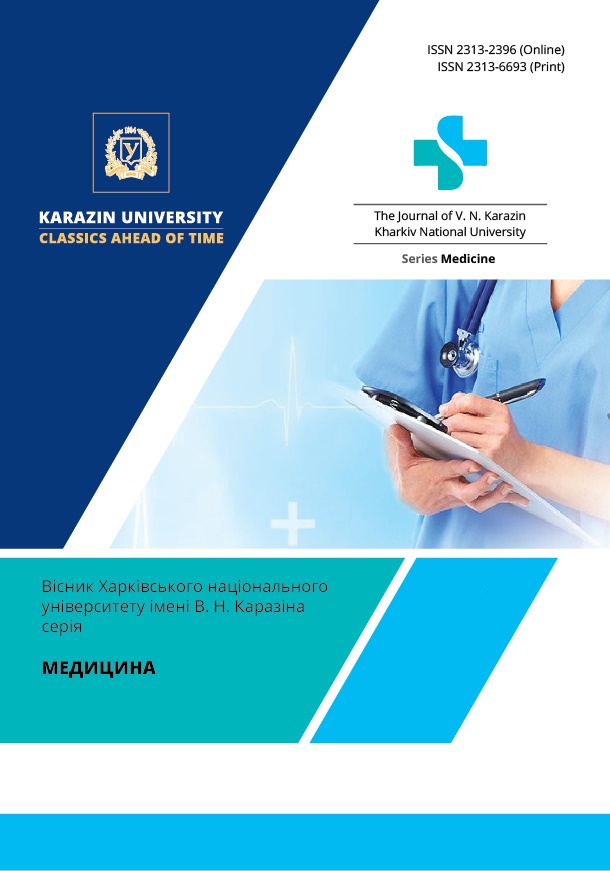Adropin and risk factors of arterial hypertension in patients with excess body weight and obesity
Abstract
Introduction. Adropin is a hormone that is involved in the pathogenesis of arterial hypertension (AH) and diseases of the cardiovascular system and energy homeostasis, in particular, it reduces insulin resistance by controlling glucose synthesis in the liver. Aim. To investigate the level of adropin and its interaction with risk factors for AH in overweight and obese patients. Materials and methods. 70 patients with AH and overweight or obesity aged 62.4 ± 10.4 years were examined. 10 practically healthy people were selected for the control group. The level of adropin was determined by enzyme immunoassay (Finetest Elisa Kit) in blood serum. The inclusion criteria for participation in the study were: age of patients 40–75 years; arterial hypertension; BMI > 25 kg/m2. Results. It was established that the average level of adropin in patients with AH and comorbid obesity or excess body weight (n = 70) was 775.5 ± 311.7 pg/ml, which is significantly lower than the content of this peptide in practically healthy individuals (n = 10), which was 1084.6 ± 110.2 pg/ml (p < 0.01). A tendency towards a decrease in the level of the hormone in men was noted. It is probably associated with a much higher prevalence of smoking among this category of people, since when assessing the factors contributing to the development of AH and worsening its prognosis, a significant decrease in adropin was found in persons with a history of smoking (p < 0.01). In obese patients (BMI > 30 kg/m2), the level of adropin was significantly lower (p < 0.05), as well as in individuals with blood pressure > 150/90 mm Hg (p > 0.05). Conclusions. The level of serum adropin is significantly reduced in persons with AH and overweight and obesity compared to practically healthy persons. Factors contributing to a decrease in peptide concentration include smoking, obesity, and elevated blood glucose levels. Blood pressure indicators are not critical for changes in blood hormone concentration, which is probably due to medications used to treat AH.
Downloads
References
Ali II, D’Souza C, Singh J, Adeghate E. Adropin’s Role in Energy Homeostasis and Metabolic Disorders. Int J Mol Sci 2022;23:8318. DOI: https://doi.org/10.3390/IJMS23158318
Erman H, Ozdemir A, Sitar ME, Cetin SI, Boyuk B. Role of serum adropin measurement in the assessment of insulin resistance in obesity. J Investig Med 2021;69:1318–23. DOI: https://doi.org/10.1136/JIM-2021-001796
Wang B, Xue Y, Shang F, Ni S, Liu X, Fan B, et al. Association of serum adropin with the presence of atrial fibrillation and atrial remodeling. J Clin Lab Anal 2019;33:33. DOI: https://doi.org/10.1002/JCLA.22672
Lovren F, Pan Y, Quan A, Singh KK, Shukla PC, Gupta M, et al. Adropin is a novel regulator of endothelial function. Circulation 2010;122. DOI: https://doi.org/10.1161/CIRCULATIONAHA.109.931782
Akcılar R, Koçak FE, Şimşek H, Akcılar A, Bayat Z, Ece E, et al. The effect of adropin on lipid and glucose metabolism in rats with hyperlipidemia. Iran J Basic Med Sci 2016;19:245.
Altincik A, Sayin O. Evaluation of the relationship between serum adropin levels and blood pressure in obese children. J Pediatr Endocrinol Metab 2015;28:1095–100. DOI: https://doi.org/10.1515/JPEM-2015-0051/MACHINEREADABLECITATION/RIS
Gu X, Li H, Zhu X, Gu H, Chen J, Wang L, et al. Inverse correlation between plasma adropin and ET-1 levels in essential hypertension a cross-sectional study. Med (United States) 2015;94. DOI: https://doi.org/10.1097/MD.0000000000001712
Gulen B, Eken C, Kucukdagli OT, Serinken M, Kocyigit A, Kılıc E, et al. Adropin levels and target organ damage secondary to high blood pressure in the ED. Am J Emerg Med 2016;34:2061–4. DOI: https://doi.org/10.1016/J.AJEM.2016.04.014
Maciorkowska M, Musiałowska D, Małyszko J. Adropin and irisin in arterial hypertension, diabetes mellitus and chronic kidney disease. Adv Clin Exp Med 2019; 28. DOI: https://doi.org/10.17219/ACEM/104551
Çelik HT, Akkaya N, Erdamar H, Gok S, Kazanci F, Demircelik B, et al. The effects of valsartan and amlodipine on the levels of irisin, adropin, and perilipin. Clin Lab 2015;61:1889–95. DOI: https://doi.org/10.7754/CLIN.LAB.2015.150420
Bozic J, Kumric M, Kurir TT, Males I, Borovac JA, Martinovic D, et al. Role of Adropin in Cardiometabolic Disorders: From Pathophysiological Mechanisms to Therapeutic Target. Biomedicines 2021;9. DOI: https://doi.org/10.3390/BIOMEDICINES9101407
The Journal of V. N. Karazin Kharkiv National University, series Medicine has following copyright terms:
- Authors retain copyright and grant the journal right of first publication with the work simultaneously licensed under a Creative Commons Attribution License that allows others to share the work with an acknowledgement of the work’s authorship and initial publication in this journal.
- Authors are able to enter into separate, additional contractual arrangements for the non-exclusive distribution of the journal’s published version of the work, with an acknowledgement of its initial publication in this journal.
- Authors are permitted and encouraged to post their work online prior to and during the submission process, as it can lead to productive exchanges, as well as earlier and greater citation of published work.




